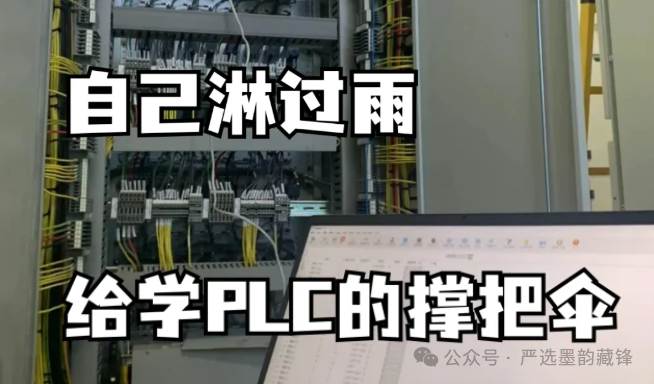
PLC Hardware Installation: Dust and Moisture Prevention Measures for Stable Operation in Harsh Environments!
Introduction
Hello everyone! Today, I want to share a crucial yet often overlooked topic in the field of factory automation—dust and moisture prevention techniques for PLCs. Don’t underestimate these details, as they often determine whether your PLC can operate stably in harsh environments for a long time! Imagine: a costly PLC overheating due to dust accumulation or short-circuiting due to moisture can lead to significant losses! Don’t worry, today I will teach you the most practical methods to ensure your PLC remains “rock solid” even in harsh environments!
Why is Dust and Moisture Prevention So Important?
Let’s look at a few gruesome real cases:
-
A food factory had its PLC control cabinet fail due to flour dust accumulation, causing the cooling fan to malfunction, leading to PLC overheating and an 8-hour shutdown of the entire production line!
-
A coastal chemical plant experienced communication failures in its PLC modules due to salt mist corrosion, with repair costs reaching 40% of the original equipment price within six months!
PLC is like a precision brain, while dust and moisture are its “arch enemies”:
-
Dust can block cooling channels, causing components to overheat.
-
Moisture can cause short circuits and corrosion, shortening equipment lifespan.
-
Conductive dust can even lead to circuit board short circuits and damage.
The Three Golden Rules for Dust and Moisture Prevention
1. Choose the Right Installation Location
A good location means less maintenance!
-
Keep at least 2 meters away from dust and moisture sources.
-
Avoid installation near doors, windows, or under roofs.
-
Preferably choose the interior of a control room; if installation on-site is necessary, use a cabinet with an IP65 protection rating or higher.
-
Red alert: Never install the PLC directly above equipment for “easy observation”!
2. Cabinet Protection and Sealing
Your PLC needs a "golden shield"!
-
Sealing treatment:
-
Use dust sealing strips (silicone material is best).
-
Use waterproof connectors for all cable entries.
-
Add magnetic sealing strips to cabinet doors to ensure a tight seal when closed.
-
-
Ventilation and cooling:
-
Install cooling fans with dust filters (remember to clean regularly!).
-
Or use
blue recommendation: heat pipe coolers with a completely sealed, fanless design.
-
-
Internal drying:
-
Add an automatic temperature-controlled heater (to prevent condensation).
-
Place moisture-absorbing silica gel bags (replace when discolored).
-
3. Three Musts for Daily Maintenance
Good maintenance means your PLC lasts longer!
-
Must conduct regular inspections:
-
Visually check sealing strips for aging weekly.
-
Clean the interior of the cabinet with compressed air monthly (pressure should not exceed 0.3MPa!).
-
-
Must record environmental data:
-
Install temperature and humidity recorders to monitor the cabinet environment.
-
Red alert: Immediate action is required when humidity exceeds 70%!
-
-
Must establish an emergency plan:
-
Prepare backup heaters and filters.
-
Train operators on emergency power-off procedures.
-
Strategies for Special Environments
1. High Dust Environments (e.g., cement plants, flour mills)
-
Double protection: Add a dust cover outside the cabinet.
-
Positive pressure design: Maintain slight positive pressure inside the cabinet to prevent dust ingress.
-
Blue technique: Install a cyclone dust removal device at the ventilation outlet.
2. High Humidity Environments (e.g., paper mills, coastal factories)
-
Three-proof treatment: Spray three-proof paint on the PLC circuit board.
-
Dehumidification system: Install a small dehumidifier (choose industrial-grade products!).
-
Isolation installation: Install the PLC in an air-conditioned control room.
3. Corrosive Environments (e.g., chemical plants, electroplating workshops)
-
Material upgrade: Choose stainless steel cabinets or FRP materials.
-
Gas-tight design: Completely seal and use nitrogen filling to maintain internal positive pressure.
-
Regular testing: Conduct insulation resistance tests quarterly.
Common Misconceptions and Corrections
❌ Myth 1: “Our factory environment is fine, no need to worry too much.”
✅ Fact: Even seemingly clean environments can accumulate dust over time, posing risks!
❌ Myth 2: “An IP65 cabinet is a one-time solution.”
✅ Fact: Sealing strips will age, and protection levels will decrease over time!
❌ Myth 3: “Using a hairdryer during humidity is sufficient.”
✅ Fact: Sudden high-temperature drying can damage components! Use a constant temperature heater for gradual dehumidification.
Practical Case Sharing
A PLC renovation project in an automotive spray painting workshop:
-
Problem: The original PLC failed every 6 months on average, mainly due to paint dust and solvent vapors.
-
Solution:
-
Replaced with a stainless steel explosion-proof cabinet.
-
Installed a ventilation system with activated carbon filtration.
-
Internally sprayed with a nano oil-repellent coating.
-
-
Effect: The PLC ran continuously for 18 months without failure, and maintenance costs were reduced by 75%!
Interactive Questions
-
What is the biggest challenge you face in your PLC installation environment? Dust? Moisture? Or corrosion?
-
What effective dust and moisture prevention measures have you used? How effective were they?
-
If you could redesign your PLC installation plan, what improvements would you make?
Conclusion
Remember: Protecting PLC hardware is not an “optional” choice, but a key investment in ensuring production stability! A comprehensive dust and moisture prevention plan may only cost 5% of the PLC cost but can extend equipment life by 3-5 years!
Take action! Start checking your PLC installation environment today; small changes can make a big difference. If you have more good methods or face special challenges, feel free to share and discuss in the comments! Let’s work together to build a rock-solid industrial control system!
ShareSaveViewLike